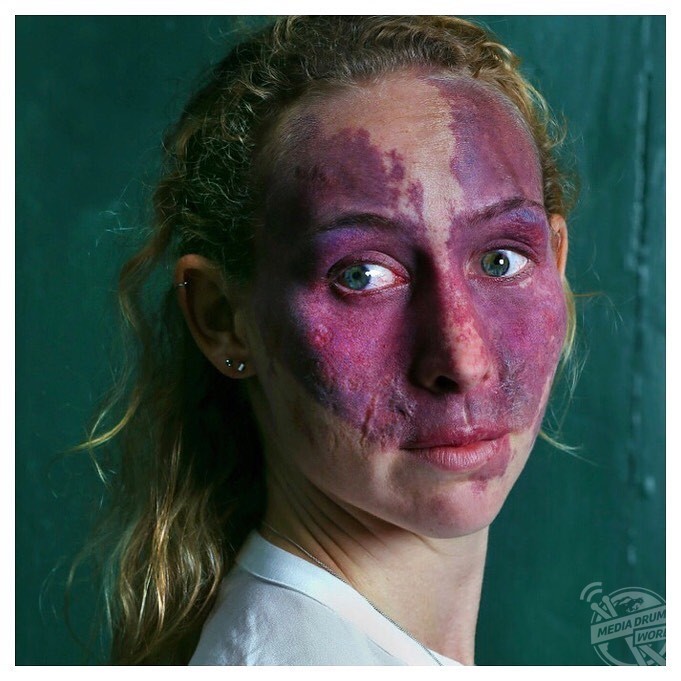
By Alex Jones
MEET THE woman whose face was ACCIDENTALLY scarred by DOCTORS when they used a laser treatment to REDUCE the appearance of her BIRTHMARK.
Tessa Schiethart (26) from Amsterdam, The Netherlands, was born with a port wine stain birthmark covering most of her face. She was born with a vascular condition known as Sturge-Weber syndrome (SWS) – a rare disorder affecting the eyes and brain that’s usually associated with a large birthmark that extends across the forehead or scalp.
Fortunately, the rare syndrome did not affect Tessa’s brain, so she has avoided debilitating epileptic fits that affect a number of people with the condition. However, the 26-year-old is completely blind in her right eye and has around 80 per cent vision in her left. Although her remaining eyesight is currently ‘stable’, doctors have warned her that her vision is not guaranteed and that she may one day go totally blind.
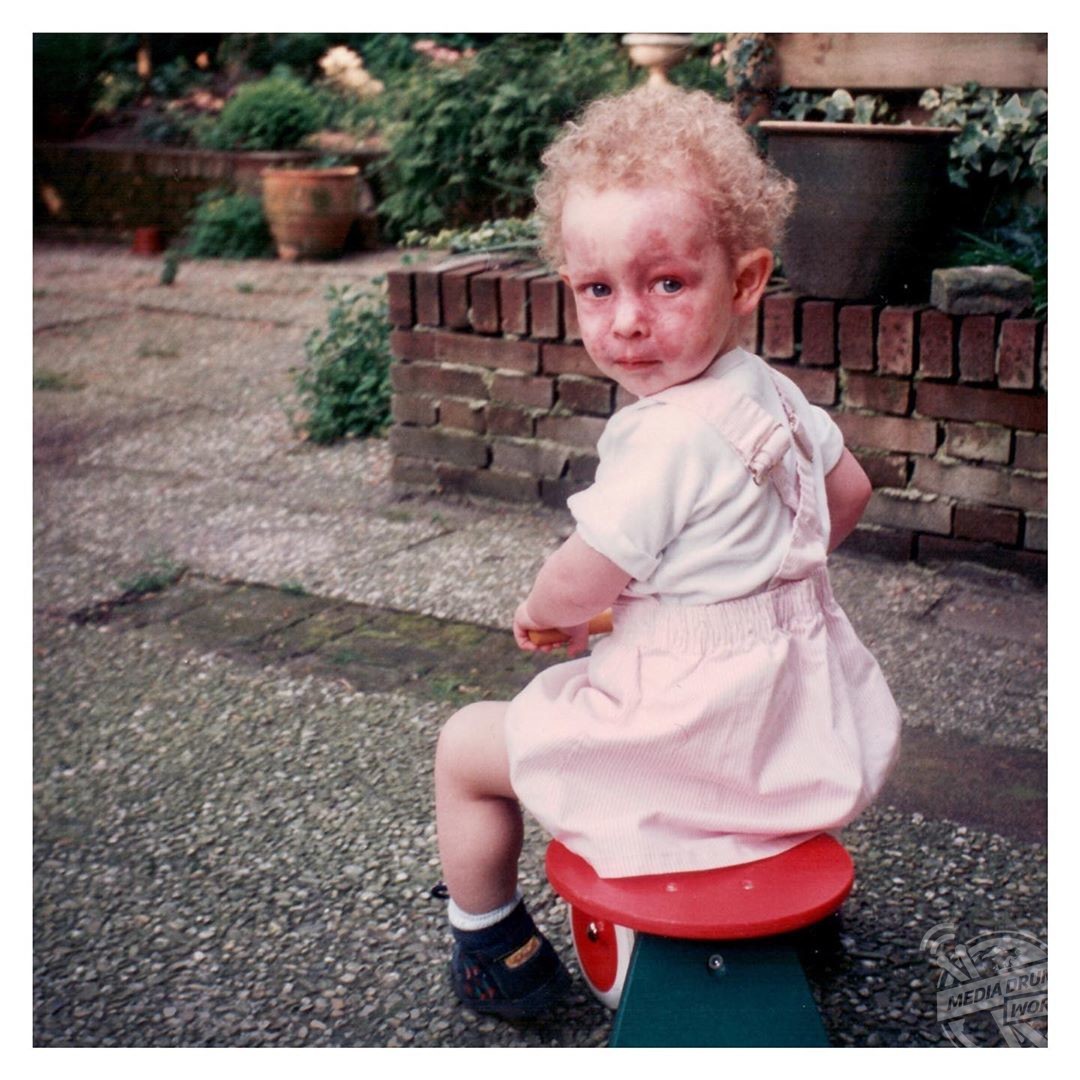
As very little was known about SWS when Tessa was born, doctors may have missed the opportunity to save the vision in her right eye, although it’s possible that Tessa was totally blind in that eye from birth. However, Tessa’s parents were encouraged by doctors to treat their newborn daughter’s birthmarks with lasers whilst she was very young as infant’s skin was far more tolerant to such procedures.
At six months old, Tessa underwent regular laser treatment to ‘lighten’ her port wine stain. When she turned two, the hospital where she received treatment used a new laser to perform the latest round of medical procedures on Tessa. The machine was calibrated at a much higher level than expected and the toddler was left with severe burns around her nose and above her left eye – leaving visible scarring and causing a great deal of distress to Tessa and her parents.
Despite a difficult start to life, Tessa has always embraced her condition as part of her identity and playfully suggests that her ‘birthmark trademark’ ensures she ‘never has to introduce herself twice’.
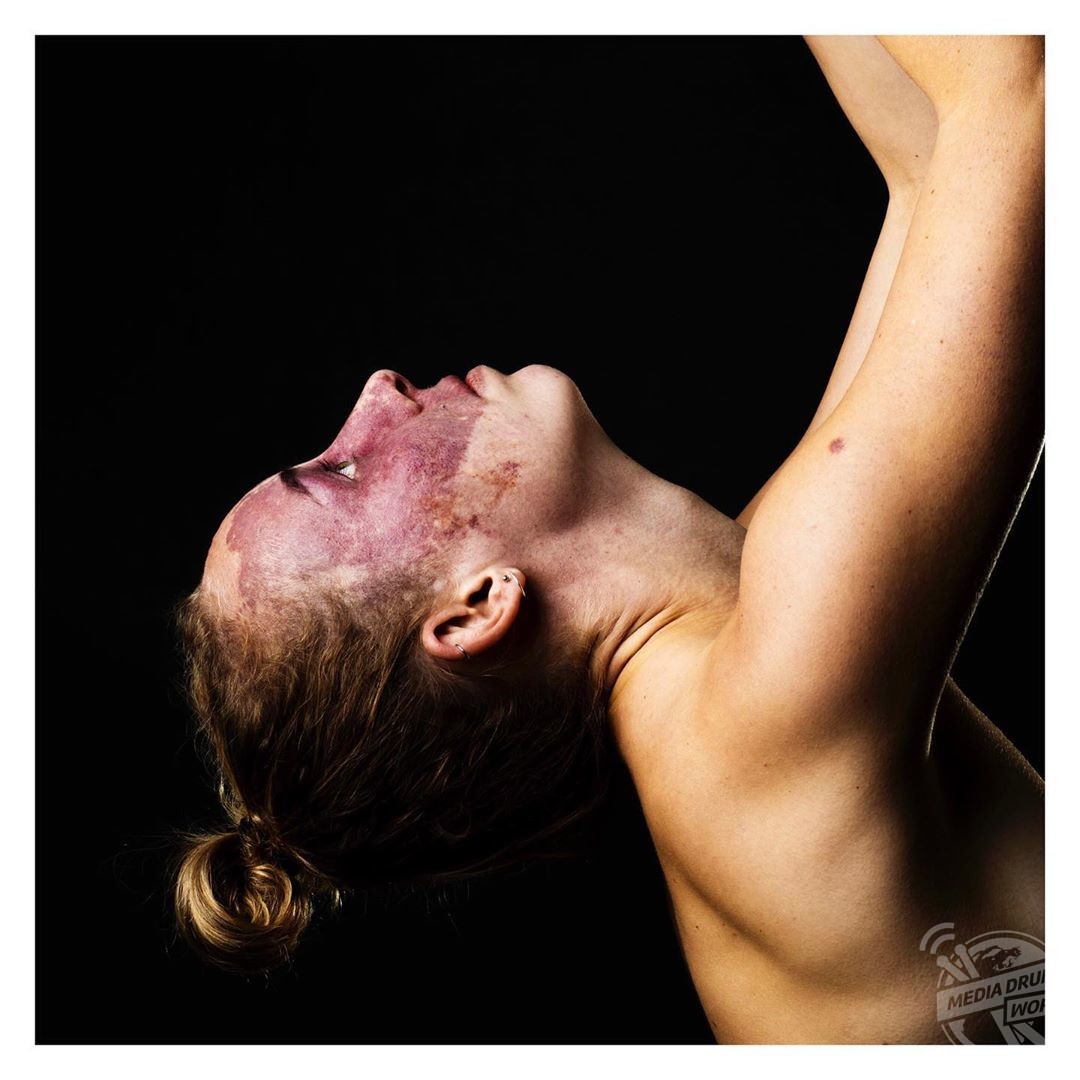
“I was born with a port wine stain birthmark as part of the Sturge Weber Syndrome that I have,” says Tessa.
“Doctors advised my parents to start laser treatment when I was about six months old. At age two this went terribly wrong as the treatment severely burnt my face resulting in scar tissue on my birthmark. The scars belong to me as much as my birthmark does.
“I have eyesight problems as a result of the SWS and for me it is so much more important that I can see the world rather than spending my time ‘camouflaging’ my face for the sake of being seen differently in society. It was the battle to save my vision – not the birthmark – that had a bearing on my childhood. I had to redo a whole year of primary school as I was in the hospital almost every day for a year.
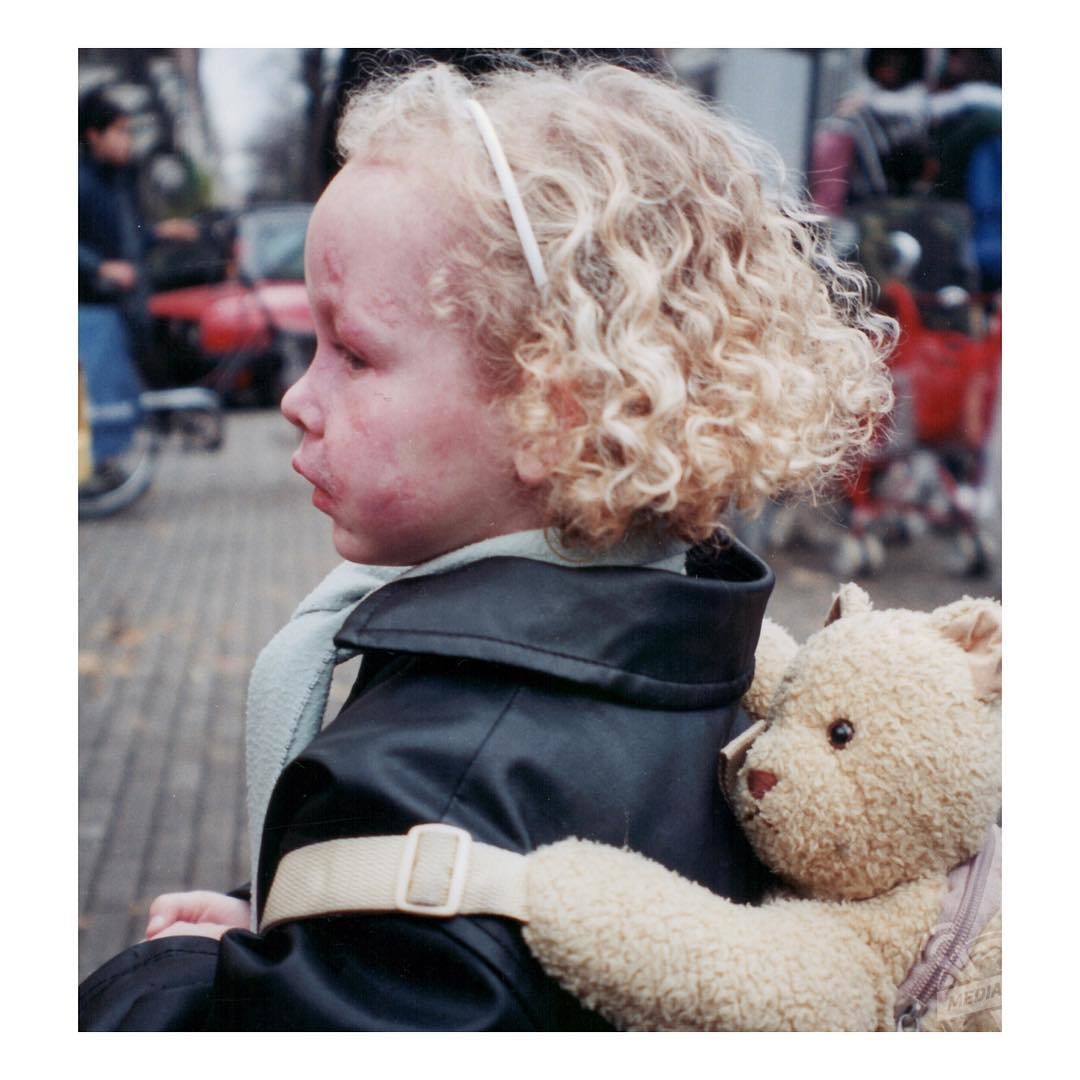
“Now, I invest time each day on my internal being, which helps me keep a healthy relationship with my exterior. I have always been interested in how people see and are seen in society, so I focused my research at university on this subject.
“Last year I conducted research on the experience of people with visible differences with stigma and discrimination which is a very personal subject to me. It has been quite a journey meeting and speaking to special people with a variety of faces and it definitely played a part in my own journey and relationship with my birthmark.
“I believe in education and letting the world see and engage in diversity in all its forms and facets. In the future I hope to continue with this research and promote equal treatment and full acceptance of different facial and bodily looks in society. Because, as others have said before, below all that pigment we are all the same colour, and with that, we should collectively move beyond what sets us apart and focus more on what brings us together.”

A proud birthmark bearer, Tessa is now is a life coach, helping people who have a visible difference – and often those who do not – to live their life to the fullest.
Tessa uses the skills harnessed throughout her life to talk to people who may feel overwhelmed by their own differences to help them embrace what sets them apart from ‘the norm’.
Tessa’s goal is to spread awareness of visible difference by sharing her own story of living with a facial birthmark. Her campaign To Face The World is aimed at promoting a difference in society and organisations, to inspire others to be themselves, and to change our societal view on diversity.
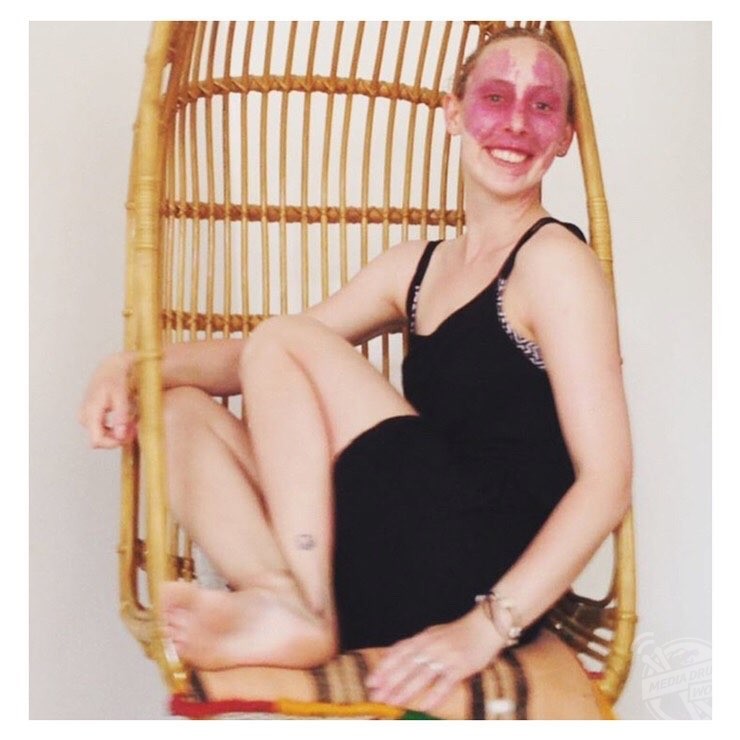
“Children are the best because they have no filter, they just say what they say so I’ll often be asked ‘what’s wrong with your face?’ and I tell them ‘it was a birthmark I was born with’ and more often than not, they’ll just go back to playing with their dinosaurs,” said the life coach who uses the Instagram handle @tofacetheworld.
“It can be the parents which are more difficult, they often just tell their kids to stop staring. I always encourage them to just ask if they’d like to know more. The more people talk, the less barriers there are. People often say that the Netherlands is a very tolerant country – and that’s true. But tolerance without engagement means nothing, and unless we learn to speak and ask questions respectfully nothing will change.
“I often travel to the UK and things are somewhat better there, there are some great organisations like Changing Faces doing great work – But I do think that British people tend to wear a lot more make up than the Dutch in general, I guess it’s a cultural thing.
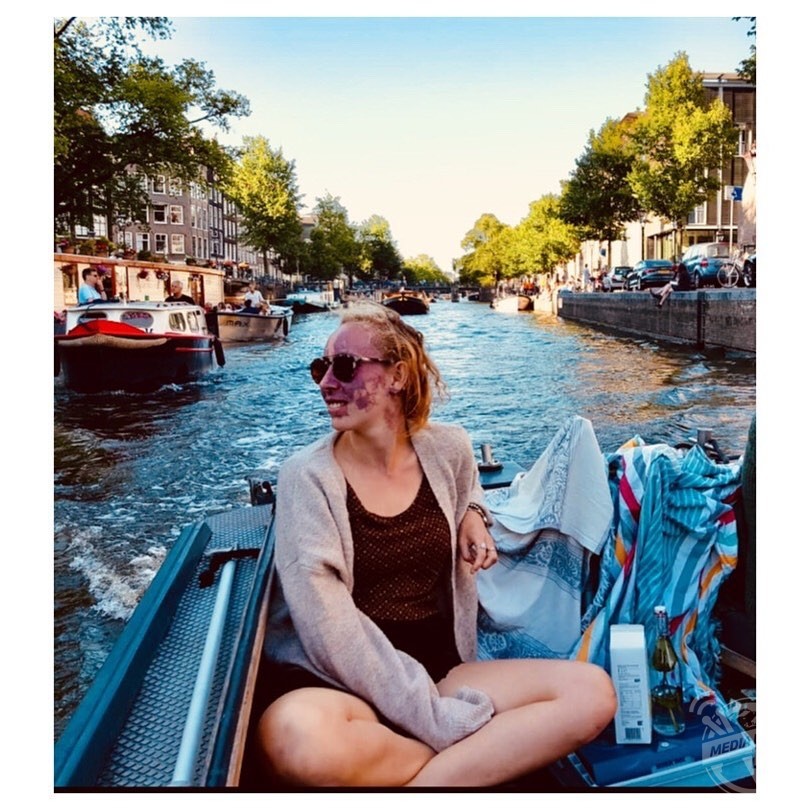
“My best advice came to me through my parents.
“If your child has a visible difference, make sure they have a voice as soon as possible. Let them answer when people enquire about their appearance in their own way. If you speak over their head or encourage them to shy away from who they are, it can have devastating effects on their self-esteem which can make for a very difficult life journey.
“If you have your own insecurities, make sure you deal with those before you can pass them on to your children. Give them a strong voice. Give them a big mouth like I have, and they’ll never let anything hold them back. They’ll be prepared to handle abuse if and when it happens.
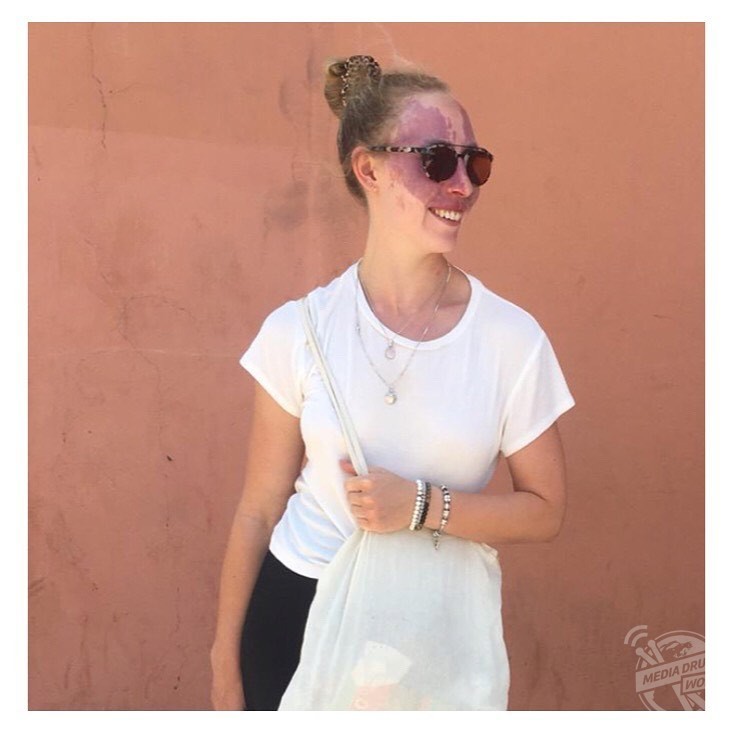
“To those of you out there who have a visible difference – or are just struggling in any way – I would urge you to surround yourself with positive people who will support you, and to seek guidance and help wherever you see fit. Reach out to your role models on Instagram. Take up yoga. See a psychologist. Know that there are people out there who are waiting to help you and who will love you for who you are.
“If you want to wear no make up one day and then camouflage yourself the next, that’s perfectly fine. Don’t be too hard on yourself. One step at a time is all it takes.
“I know as well as anyone that it can be a burden to always be looked at – and it can feel like that a lot – but you are you – uniquely you – and that should be celebrated.
“I can never say never but I would be very hesitant to undergo any procedure to ‘correct’ my birthmark – not least because of my experience as a child. For now, I just want to keep my independence, continue my research, and keep helping people find their happiness. I think that’s what most people want really.”






